@danielfalush.bsky.social
nice paper!
October 31, 2025 at 5:44 AM
nice paper!
What's left to discover: What are the viscous liquids in which Molassodon hunts, kills and devours bacterial prey? We now have many more tools to help us find out, and to understand the trade offs for different bacterial strategies. All comments welcome, thank you for reading.
June 30, 2025 at 4:24 AM
What's left to discover: What are the viscous liquids in which Molassodon hunts, kills and devours bacterial prey? We now have many more tools to help us find out, and to understand the trade offs for different bacterial strategies. All comments welcome, thank you for reading.
We also identify a convergent intermediate form and are also able to provide details about the molecular and evolutionary assembly of the Molassodon genotype, revealing a key role for lateral flagella glycosylation.
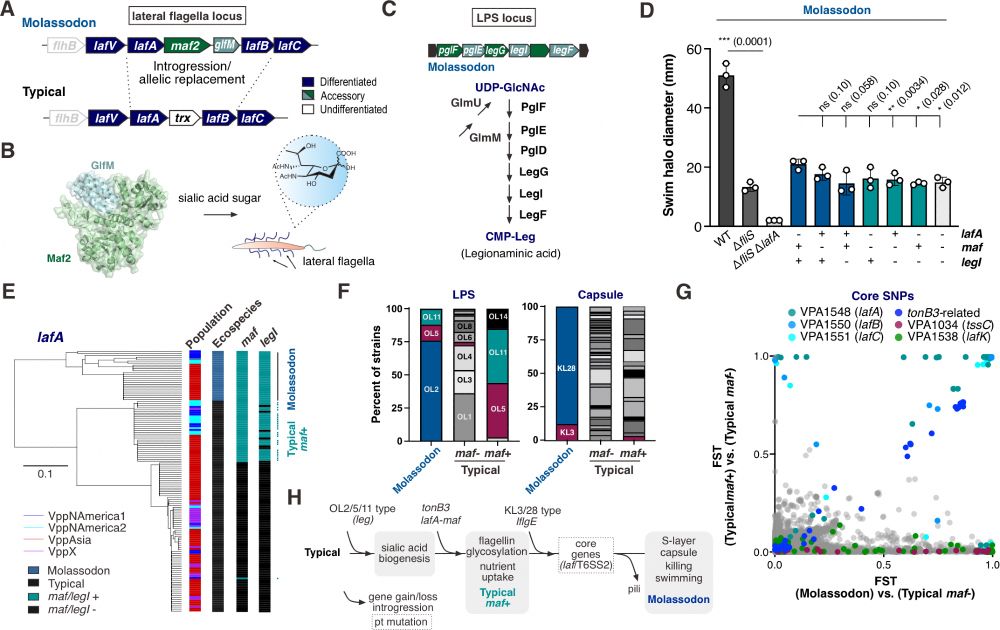
June 30, 2025 at 4:24 AM
We also identify a convergent intermediate form and are also able to provide details about the molecular and evolutionary assembly of the Molassodon genotype, revealing a key role for lateral flagella glycosylation.
Upregulated genes provide clues about the ecological advantage of fast swimming in viscous liquids. A Type 6 secretion system and nutrient uptake genes are upregulated, allowing the bacteria to kill and devour bacterial prey.
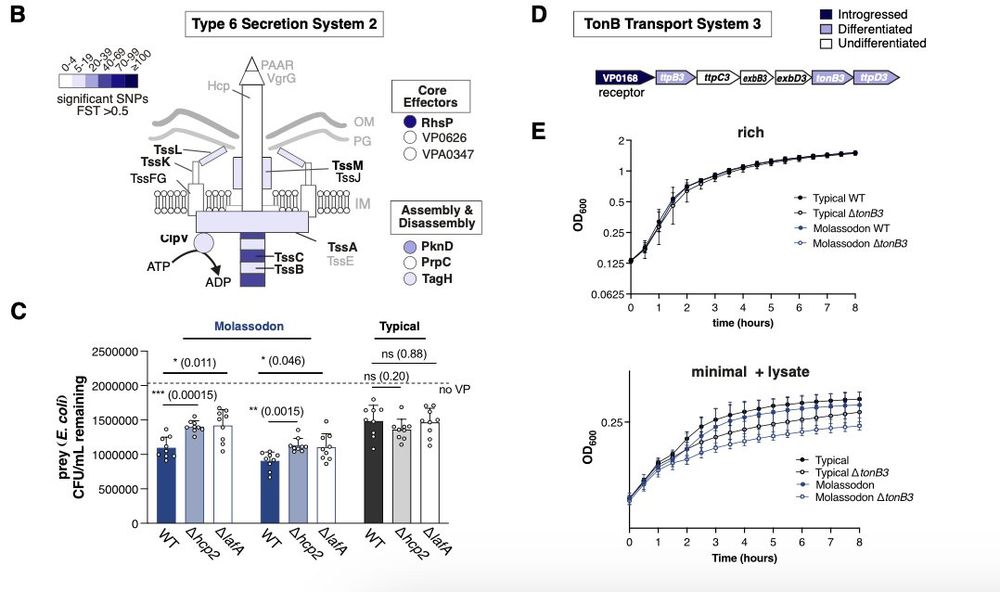
June 30, 2025 at 4:24 AM
Upregulated genes provide clues about the ecological advantage of fast swimming in viscous liquids. A Type 6 secretion system and nutrient uptake genes are upregulated, allowing the bacteria to kill and devour bacterial prey.
We use TNseq and RNA seq to show that 2/3 of ecospecies loci are either essential for this enhanced swimming or are unregulated along with it.
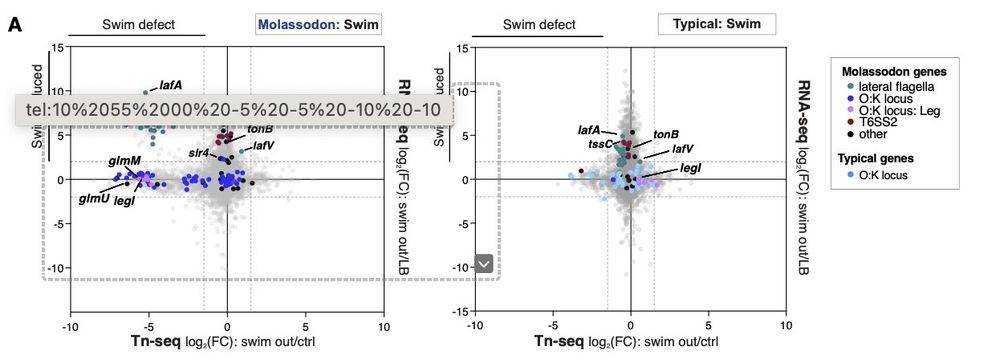
June 30, 2025 at 4:24 AM
We use TNseq and RNA seq to show that 2/3 of ecospecies loci are either essential for this enhanced swimming or are unregulated along with it.
Bacterial ecospecies are powerful tools for molecular biological, evolutionary and ecological investigation because all of the differentiated genes are working together. Molassodon have abandoned swarming on surfaces and instead use their lateral flagella to swim faster in viscous liquids.
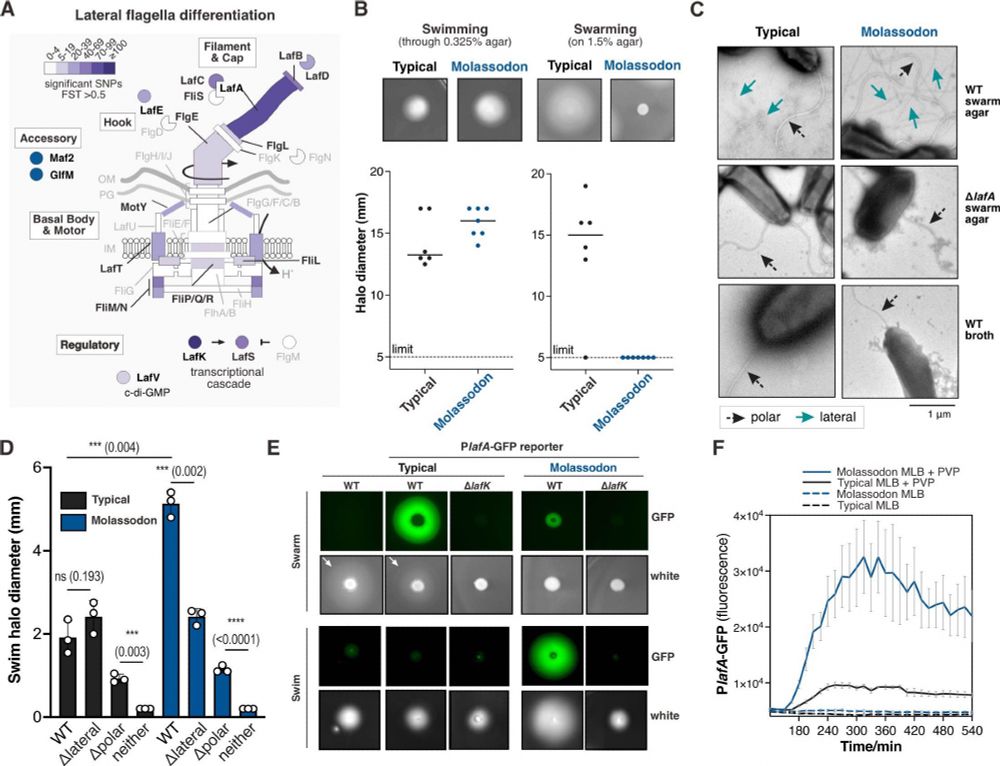
June 30, 2025 at 4:24 AM
Bacterial ecospecies are powerful tools for molecular biological, evolutionary and ecological investigation because all of the differentiated genes are working together. Molassodon have abandoned swarming on surfaces and instead use their lateral flagella to swim faster in viscous liquids.
Bacterial ecospecies are complex adaptations on an otherwise freely recombining background. Molassodon has evolved via introgression of accessory genes and a few core genes from other Vibrio species, as well as point mutation.
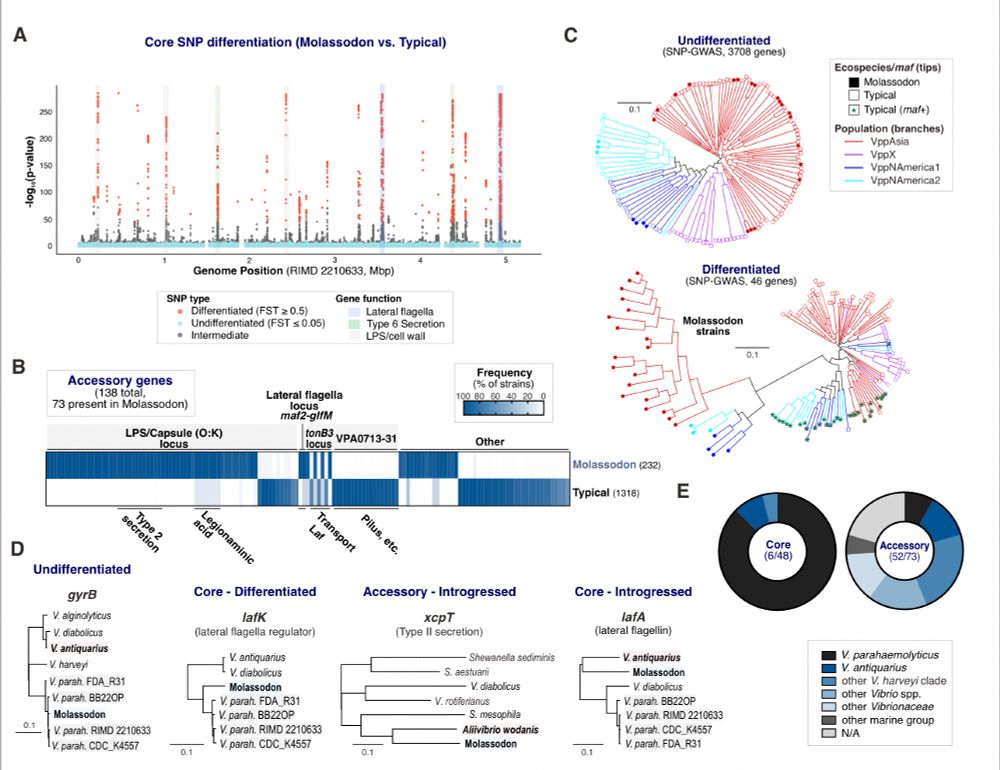
June 30, 2025 at 4:24 AM
Bacterial ecospecies are complex adaptations on an otherwise freely recombining background. Molassodon has evolved via introgression of accessory genes and a few core genes from other Vibrio species, as well as point mutation.
There is every chance to make a recovery from these cuts and to leave science in a healthier place than it was, for example if the opposition to them galvanizes a common sense of purpose across American society - don't lose sight of that!
June 18, 2025 at 12:37 PM
There is every chance to make a recovery from these cuts and to leave science in a healthier place than it was, for example if the opposition to them galvanizes a common sense of purpose across American society - don't lose sight of that!
We have lived within a period of unprecedented stability and.. should keep some sense of perspective about this. Second World War and cultural revolution caused incomparably greater upheaval, for example, silly to compare, but many things were better than ever a couple of human generations later.
June 18, 2025 at 12:37 PM
We have lived within a period of unprecedented stability and.. should keep some sense of perspective about this. Second World War and cultural revolution caused incomparably greater upheaval, for example, silly to compare, but many things were better than ever a couple of human generations later.
I agree it's terrible, my sympathies, but I do think that hyperbolae, "multiple generations" are not helpful. In my parents lifetime, I can think of much worse things that have happened and been recovered from.
June 17, 2025 at 6:02 AM
I agree it's terrible, my sympathies, but I do think that hyperbolae, "multiple generations" are not helpful. In my parents lifetime, I can think of much worse things that have happened and been recovered from.
follow me Graham!
March 24, 2025 at 8:30 AM
follow me Graham!
Thank you for reading our thread, please read the preprint too! your comments on all aspects are extremely welcome.
February 28, 2025 at 6:06 AM
Thank you for reading our thread, please read the preprint too! your comments on all aspects are extremely welcome.
Fascinatingly, their convergence in ecospecies differentiation between the two streptococcus species, involving the same genes and gene categories (cell division related), despite independent origins. Different genera find different but predictable paths for adaptive differentiation.

February 28, 2025 at 6:06 AM
Fascinatingly, their convergence in ecospecies differentiation between the two streptococcus species, involving the same genes and gene categories (cell division related), despite independent origins. Different genera find different but predictable paths for adaptive differentiation.
The first two bacterial ecospecies we discovered, in Heliocobacter pylori and vibrio parahaemolyticus are characterized by high differentiation restricted to a small fraction of the genome. The streptococcal ones have progressed further, consistent with the older age of the species.
February 28, 2025 at 6:06 AM
The first two bacterial ecospecies we discovered, in Heliocobacter pylori and vibrio parahaemolyticus are characterized by high differentiation restricted to a small fraction of the genome. The streptococcal ones have progressed further, consistent with the older age of the species.
And the first bacterial ecospecies threesome, in Streptococcus oralis.

February 28, 2025 at 6:06 AM
And the first bacterial ecospecies threesome, in Streptococcus oralis.
We illustrate this concretely by discovering a third bacterial ecospecies pair in Streptococcus mitis.
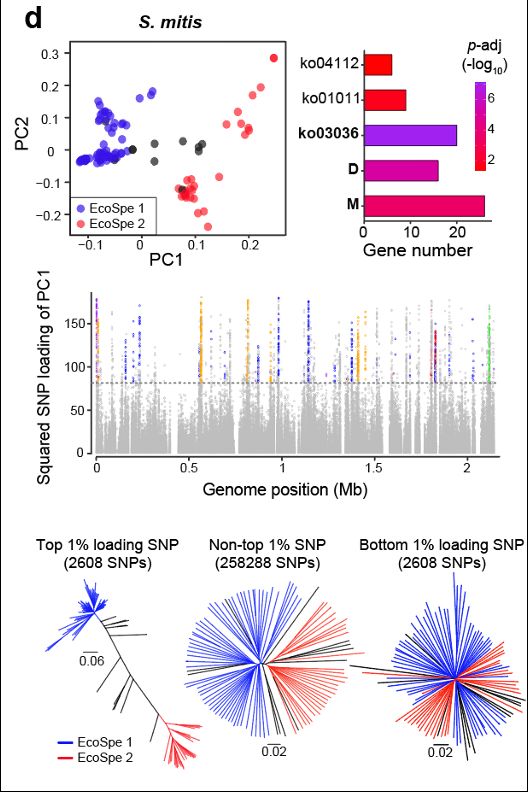
February 28, 2025 at 6:06 AM
We illustrate this concretely by discovering a third bacterial ecospecies pair in Streptococcus mitis.
Why? Well what happens is that for species which maintain large population sizes for long time periods, natural selection becomes increasingly important in structuring diversity and this generates long range LD.

February 28, 2025 at 6:06 AM
Why? Well what happens is that for species which maintain large population sizes for long time periods, natural selection becomes increasingly important in structuring diversity and this generates long range LD.
Last and not least, we provide an answer to the question of why panmictic bacterial species are rare. A well-mixed bacterial species should have low LD at all genetic distances, but there are no such species. Instead we find that the most diverse species have intermediate long-range LD.

February 28, 2025 at 6:06 AM
Last and not least, we provide an answer to the question of why panmictic bacterial species are rare. A well-mixed bacterial species should have low LD at all genetic distances, but there are no such species. Instead we find that the most diverse species have intermediate long-range LD.
And there are curious findings too, like the fact that the genome fluidity of rod shaped bacteria is more than double that of spherical ones. What can you see in the data? Or what would you like to see? Let us know!
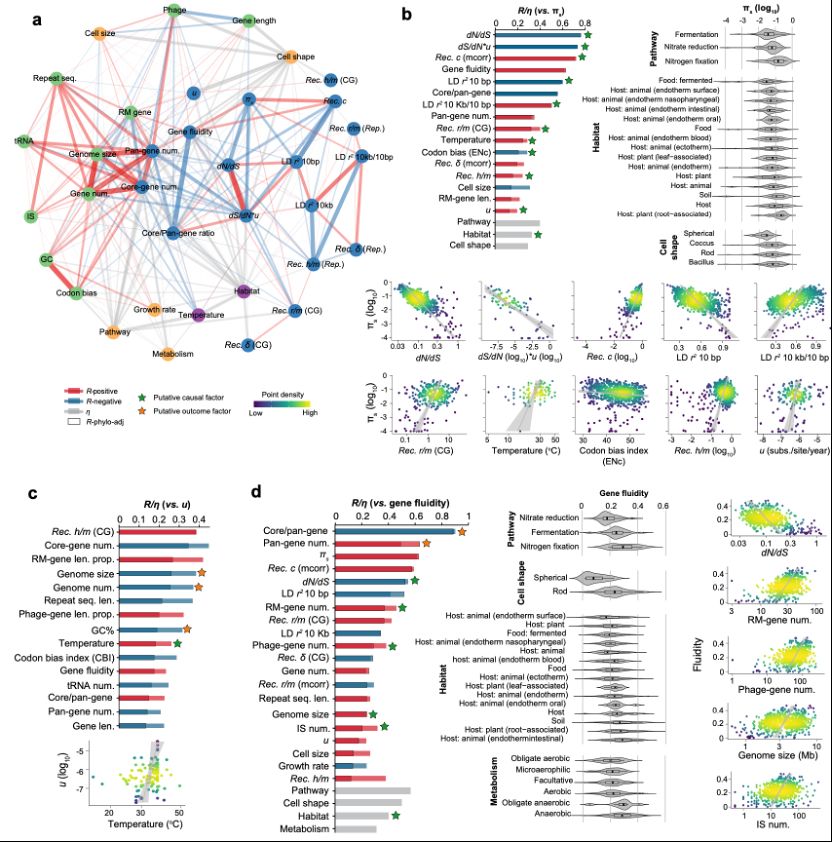
February 28, 2025 at 6:06 AM
And there are curious findings too, like the fact that the genome fluidity of rod shaped bacteria is more than double that of spherical ones. What can you see in the data? Or what would you like to see? Let us know!
We are able to use the population genetic data to address classic questions such as what determines the number of genes? It seems to be a balance between deletion bias and selection favoring increasing genome complexity.

February 28, 2025 at 6:06 AM
We are able to use the population genetic data to address classic questions such as what determines the number of genes? It seems to be a balance between deletion bias and selection favoring increasing genome complexity.
Why has it taken us so long to update it? Like fine wine, it has matured. Unlike fine wine, it has also grown in scale. We now analyze population genetic data from nearly 800 species, instead of twenty something and genomic data from 15000. Figure 1 presents an overview of genomic parameters.
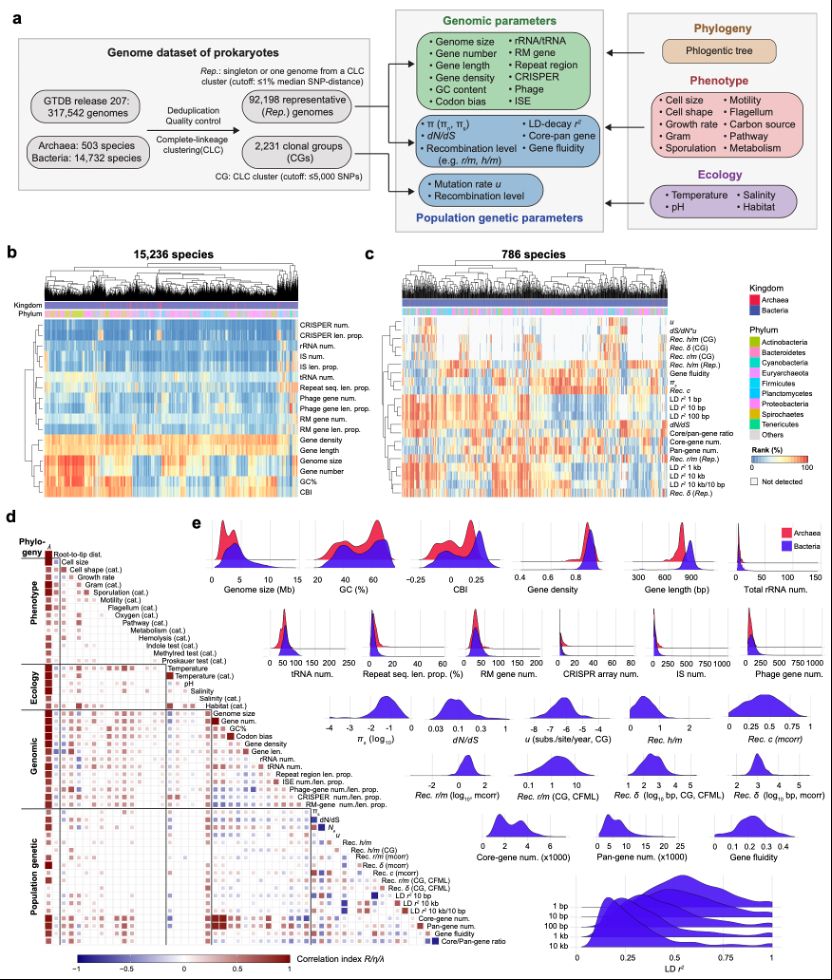
February 28, 2025 at 6:06 AM
Why has it taken us so long to update it? Like fine wine, it has matured. Unlike fine wine, it has also grown in scale. We now analyze population genetic data from nearly 800 species, instead of twenty something and genomic data from 15000. Figure 1 presents an overview of genomic parameters.

